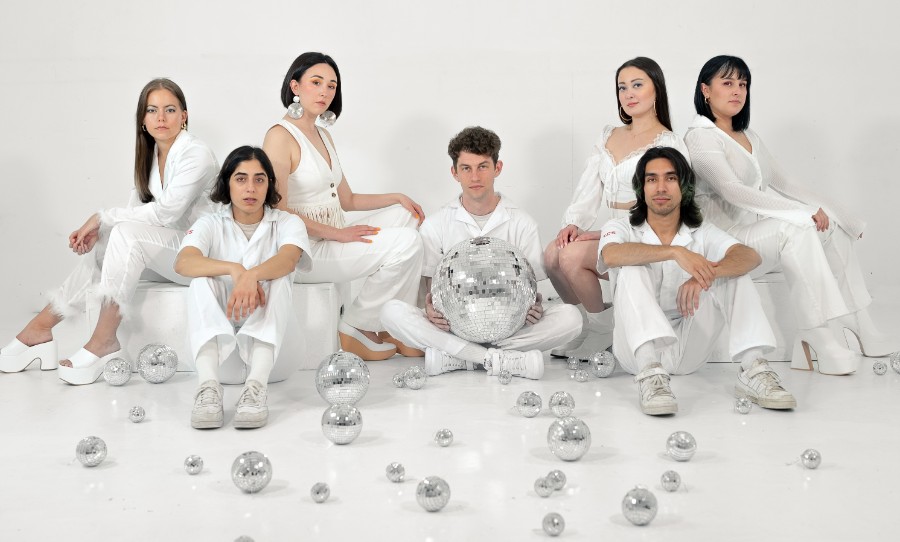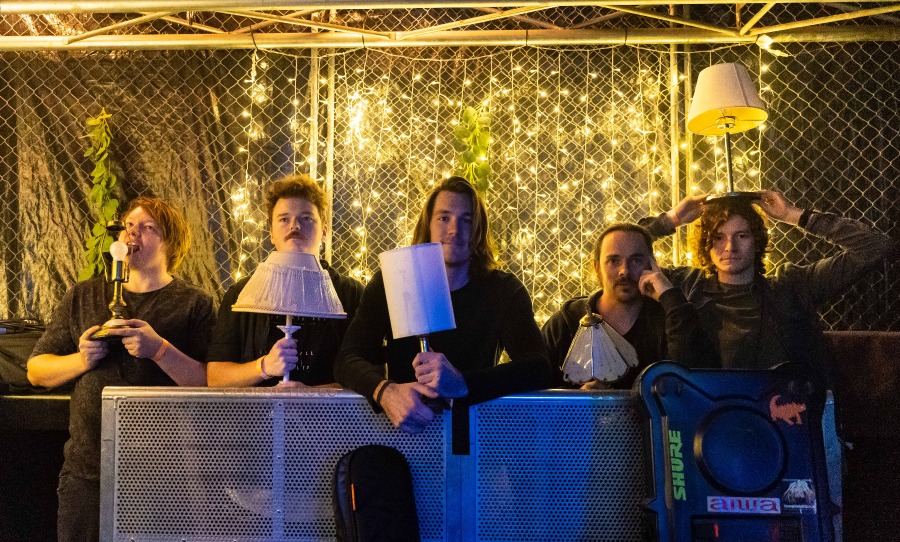We took five with Lost Frequencies to chat about his rigorous songwriting and production process and how his latest smash, Where Are You Now, came together.
Lost Frequencies, aka Felix De Laet, is a Belgian house producer who rakes in streams by the million (in fact, across his whole career, it’s well into the billions). Since being launched into the stratosphere with a remix of Easton Corbin’s Are You With Me, he’s hardly slowed down. His latest single featuring British vocalist Calum Scott is Where Are You Now. And it’s also on a world-conquering trajectory.
But the foundation for this mainstream success is a commitment to songcraft, hawk-like attention to detail in sound design, and painstaking engineering at the mixing and mastering stages. But above all else, he’s committed to the ‘less is more’ philosophy. Hell, his debut album even shares a title with this approach.
We caught up with Felix De Laet, who was eager to shed light on his whole production process (which involves a lot of teamwork), catching the vibe from lyrics, and his favourite tools for injecting space into his mixes.

HAPPY: Let’s start at the beginning of Where Are You Now. In the intro, you’ve got the lyric “You’re just like my favourite song going round, round in my head” treated with filters, delays, panning – like the sensation of a dream. It strikes me that you’re trying to connect the use of effects to the story of the song. Is that true?
FELIX: I like to listen to the lyrics and play with them and think about how they come over in the track. But for this one, it’s something I like to do in most of my tracks: a catchy intro that filters out and when the rest of the track comes in, it’s a warm feeling — especially when the bottom end kicks in. It’s a move I like, but it works well in this track, especially.
HAPPY: Again, on the narrative of the song, it’s also a classic, romantic, road trip song. The guitar also brings an Americana vibe to the track too. I know that the guitar is really central to your work, but in this case, did the guitar inspire the lyrics, or was it the other way around? I was thinking especially of the lyric “Playin’ Sweet Child ‘O Mine” — you can’t really have that without guitar, right?
FELIX: Yes, that’s true, you have to have the guitar for that part [laughs]. For me, there are two really different steps in my production process and songwriting process. I work with a lot of different songwriters. I’m not a native English speaker, so I like to work with people who know their way around the lyrics.
Once I have a cool demo, then I’m going to sit down in the studio alone and work on the production on my own. That’s where I’m going to experiment. I’m going to spend some time behind the synthesizers and do some sound design. But before that, I’ll have the guitars and vocal demo version of the track to build the whole production around.
Originally, I had a seven-minute arrangement of the track. I didn’t really know what was my favourite part, or where I was going with it because seven minutes was not gonna cut it [laughs]! Calum and I had been in contact before on a remix project that didn’t end up happening, but we stayed in touch. So I sent him the demo and asked if he saw himself singing this track. He loved it, so he did it. And when he sent back the vocal, I was super inspired, so with that, I finished the final arrangement. I felt the vibe of the track thanks to Calum’s voice.
It was a cool process for this track because it was spread out over so much time. Usually, I start a track and finish within a week. I usually have everything I need — the song and the guitar — and I can just go ahead and produce. But with Where Are You Now, there was so much back and forth, which was a different process for me. It’s inspired me to take more time than I usually do. I think I’m getting older [laughs].
HAPPY: That’s interesting because you would usually associate that method with a pop of rock songwriting process but you’ve obviously brought it into the dance realm too.
FELIX: Yes, but when I work on more of a ‘club’ track, I’ll work on the production first — because that will be the most important part. But when I work on the music that the labels like, the music that they want to put out on the radio, the song comes first. Also, to get on the streaming playlists — not that we think of it as a competition, but we’re up against Adele and other major pop artists — so the songwriting is important. So if the song isn’t good in guitar and vocal demo form, I don’t want to work on the production, because it’s not the production that’s going to make the track blow up.
HAPPY: The mix of levels and layers – as well as the effects themselves – are really vital for creating space in this song. And even though the track feels heavier after the drop, if anything, there are fewer layers. Is it tempting to ever overdo it with the layers?
FELIX: I’m more of a ‘less is more’ kinda guy. I’m going to be very picky about every sound I use. Every time I use a sound, it needs to fill in the right spot and be where it should be, then I won’t need the rest of the layers. The layers need to fill different spaces within the spectrum of the mix.
In Where Are You Now, the most complicated part was to find the right place for the vocal. Calum has such a big range, but what I wanted was to be able to really turn this track up loud and have nothing disturb me. The vocal was very dynamic in parts. I tried compressing it myself, but I couldn’t really get it to where I needed it. But the songwriting team compressed it through their hardware chain and sent it back and I was like, “yeah, this is it.” It really helped me to put the vocal in the right spot.
I had so many ‘last’ versions of the mix. If you look at my final mix file, I have versions with ‘Kick +1dB’, ‘Kick -1dB’, versions with ‘Vocal +1dB’, ‘Vocal -dB’. At some point, I just got totally lost in the mix. So I just sent all of them to my mastering engineer [Pieter De Wagter] and chose my favourite out of those. When it’s mastered, other things pop out too. It was so hard to finish it, but when I listen back to it, I’m super happy with every choice that I made.
HAPPY: Phew! Now you can relax!
FELIX: [Laughs].
HAPPY: I was going to ask whether you mix as you go through the production, but it sounds like you don’t, considering your process —
FELIX: No. So when I’m happy with the arrangement, I work on the mix with a mix engineer [Andres Algaba]. I send him the stems — sometimes he changes them a bit, sometimes a lot. He’s focusing on making it a nice, clean modern mix, with a nice stereo image, and making sure it all sounds good in the bottom end too. Then he sends me his stems, then I make a few final tweaks, just to make it exactly how I want it.
I like to have a lot of different sets of ears throughout the process, but I’ve been working with Andres and Pieter for the last five years. I really trust them and their input. They’re the type that would say “the quality of this production is not as good as the last one” for example. It doesn’t really happen, but they would because they’re honest. I like that.
HAPPY: And are you and your team working in the same DAW throughout the process?
FELIX: I work in Logic, Andres works in Pro Tools and the mastering engineer, Pieter, he’s pretty old-school. He uses a lot of hardware in his processing but I think he even uses Audacity to record audio sometimes. I like that we have different DAWs, but it doesn’t really matter too much. Sometimes, the mix engineer comes to my studio but I also have Pro Tools so we can work together here. I know my way around most DAWs and I use Ableton Live for the live shows, but my happy place — and safe place — is Logic.

HAPPY: Some of the sounds in Where Are You Now have an epic, cinematic quality. I thinking especially of that booming kick in the build-up to the drop. Do you have any favourite plugins or sample libraries to get those massive sounds?
FELIX: For this track, I recorded all the samples myself. The kick came from a TR [Roland TR-8S] that I have in the studio. I really like to record my own samples because it makes me feel unique. Even though I love the sample packs I have, I’m usually going to go quicker when I get my hands on my TR and look for sounds in it, pitch it, and make a groove.
So with that particular sound, I grabbed the kick from the TR and then used the Valhalla reverbs. I’m a big fan of different reverb plugins, but I always come back to the Valhalla. They’re easy on the CPU, they’re great for sound design, and they have a pre-delay setting which I really like. But sometimes, I’ll open up a new project and use a completely different reverb, just for the sake of it.
HAPPY: So what’s next for you? Any more collabs coming up? Are you hitting the stage anytime soon?
FELIX: I’m going to Brazil next week which I’m looking forward to. I had a really big hit with Are You With Me and Where Are You Now feels like it could be that big too. I have a lot of new doors opening to me, so I really want to make the best out of it and come out in a few months with a new track with an amazing artist.
Where Are You Now is out now via Sony.



